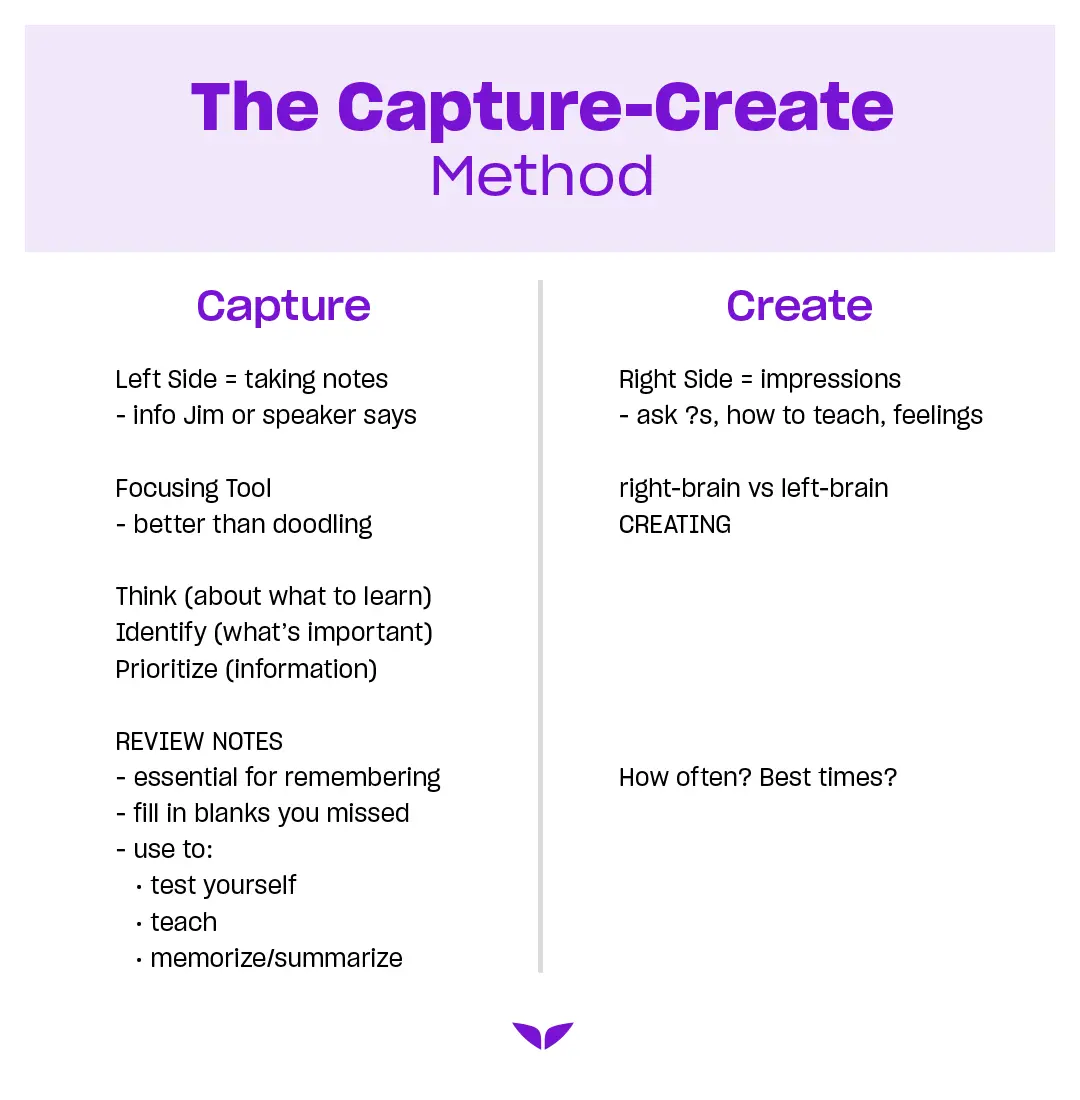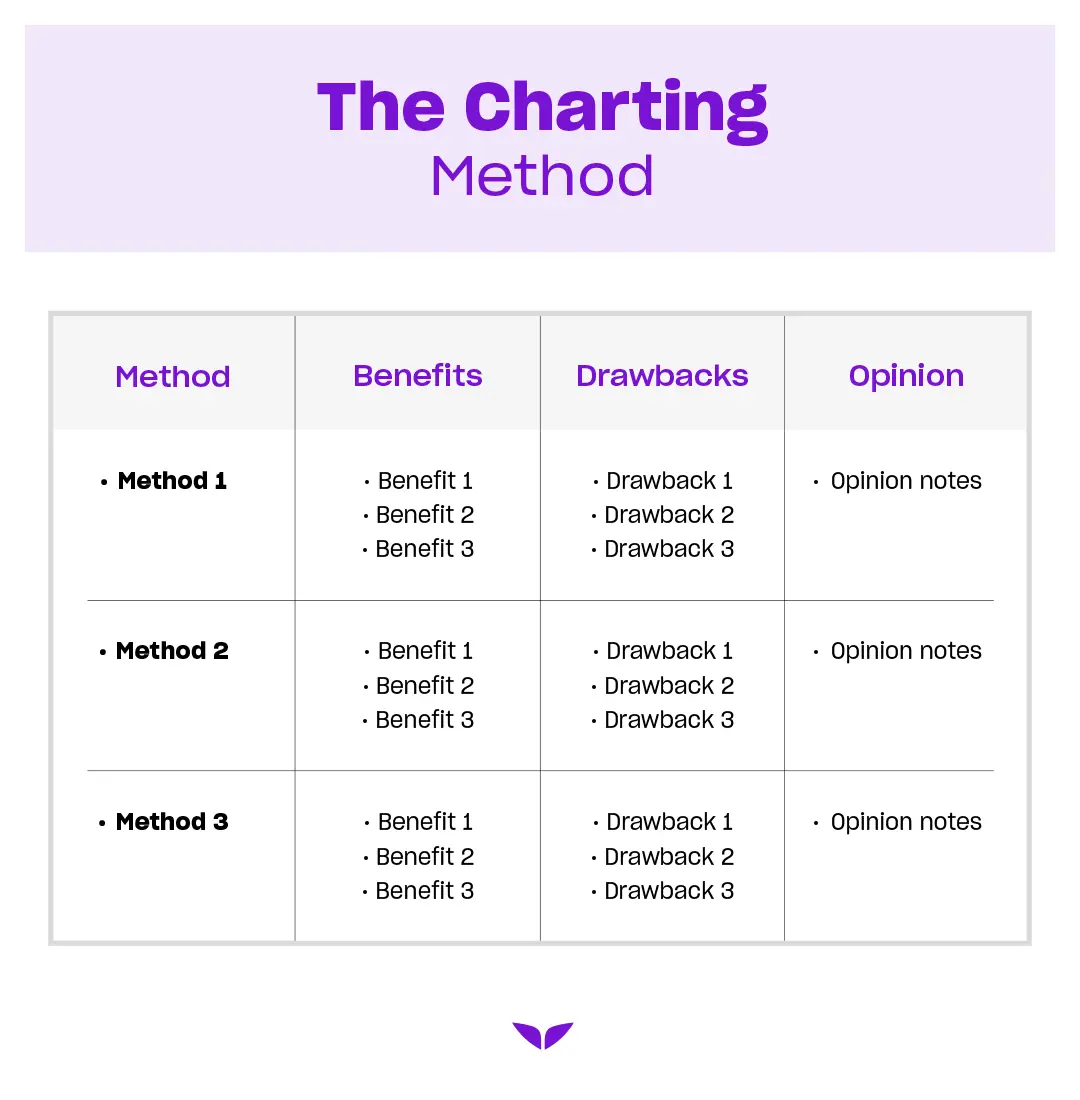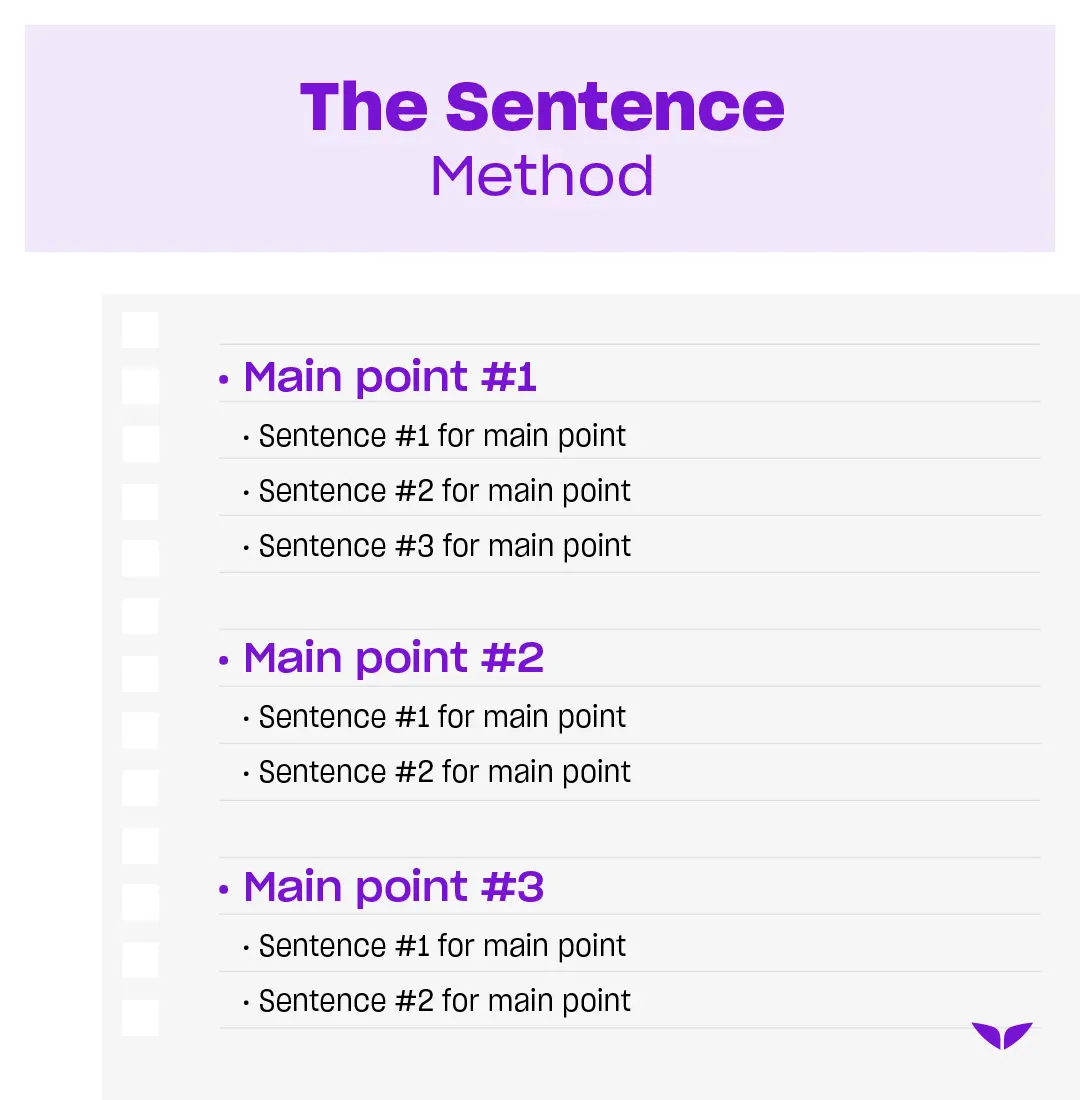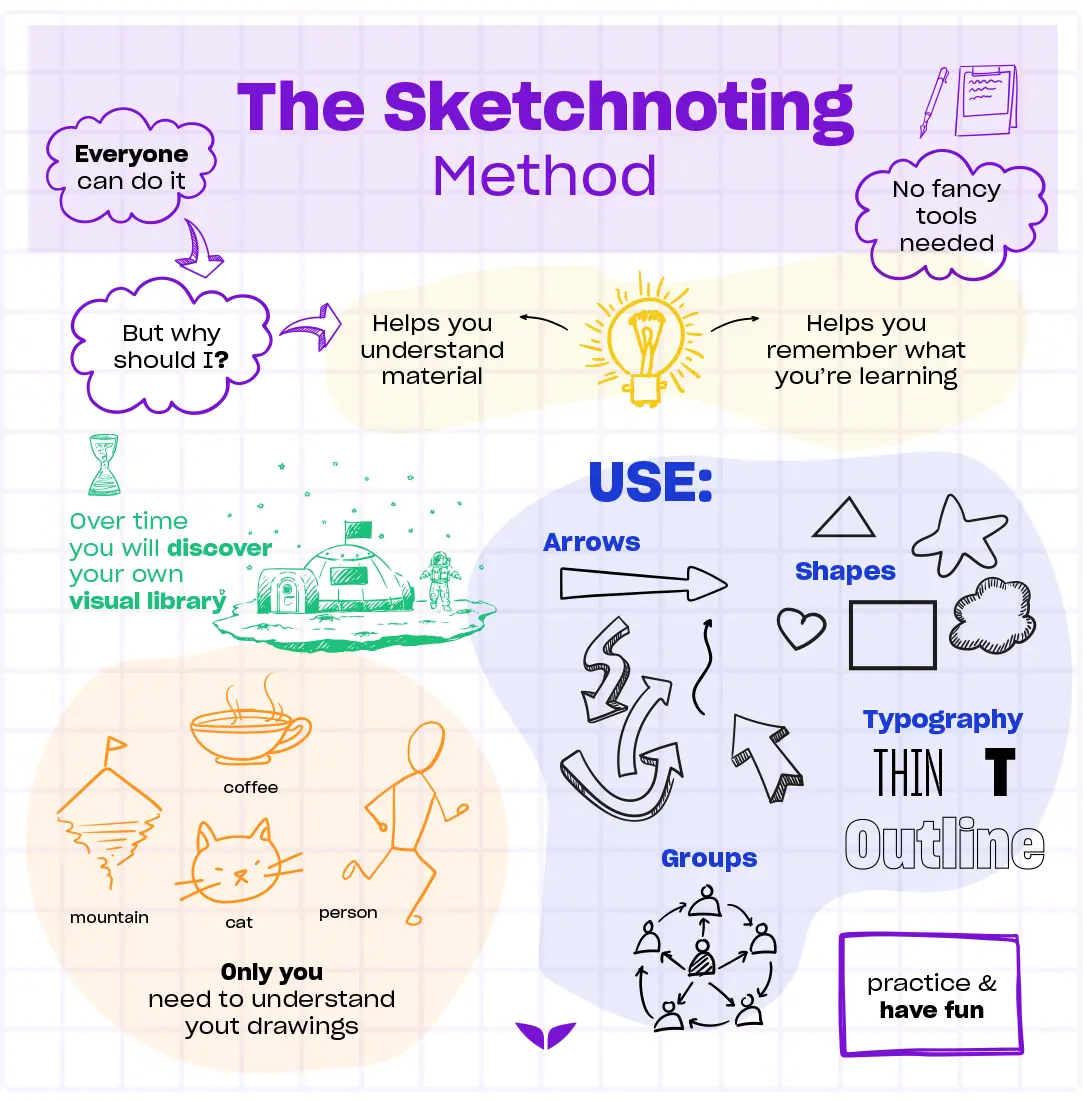You cram facts and figures into your notebook. But later, when you’re prepping for test time, it’s all a blurry mess. Scribbles here. Illegible writing there. Wait—how did a “I heart Taylor Swift” doodle get on the corner of the pad?
There’s got to be a better way to do this. Mastering how to take notes—good notes—so that you don’t find yourself guessing what that squiggly line means.
“If you take notes, you’re going to remember more,” points out Jim Kwik, a brain performance expert and trainer of Mindvalley’s Superbrain Quest.
With just a paper and a pen (or laptop, whichever you prefer), you’ll be able to absorb all that knowledge in—snap—no time.
What’s the #1 way to take notes?
The crown jewel of note-taking methods is not a one-size-fits-all approach. Rather, it’s about finding a technique that resonates with your unique learning style.
Regardless of how you take notes, Jim recommends handwriting over digital note-taking. He explains, “Studies show that when you handwrite something, you take better notes than when you type it.”
In fact, the results of a 2021 study suggest that writing words by hand, compared to typing them, might help you remember them better.
Of course, with that being said, when it comes to typing and not taking notes, Jim says to “type it digitally.” The reason? “The worst way of taking notes is not taking notes at all.”
3 types of note-taking
Understanding the three primary styles of note-taking—linear, non-linear, and digital—can significantly enhance how to take good notes. Each style has its own unique strengths and caters to different needs and preferences.
So by familiarizing yourself with these types, you can tailor your note-taking strategy to fit your personal learning style more effectively.
1. Linear note-taking
Out of all the styles, linear note-taking is the most common. It’s straightforward, and it’s perfect if you prefer simplicity and order.
It involves summarizing information in an outline in the order it’s presented. For instance, if you’re attending a lecture on the importance of healthy eating, your notes might look like this:
- Main Topic: The Importance of Healthy Eating
- Key Point 1: Benefits of Healthy Eating
- Improves overall health
- Boosts energy levels
- Supports weight management
- Key Point 2: Components of a Healthy Diet
- Fruits and vegetables
- Whole grains
- Lean proteins
- Key Point 3: Tips for Adopting a Healthy Eating Habit
- Planning meals ahead
- Choosing whole foods over processed foods
- Drinking plenty of water
- Key Point 1: Benefits of Healthy Eating
This method keeps your notes super organized. It allows you to read it faster and study later.
2. Non-linear note-taking
Non-linear note-taking is where creativity meets clarity. It allows for a more flexible approach to organizing information.
Here are a few examples:
- Mind mapping is a visual note-taking technique where you draw information around a central idea. You start with the main idea in the center of the page and branch out to subtopics, which further branch into more specific points.
- Concept mapping is similar to mind mapping, but instead of focusing on one idea, it connects many ideas or concepts, kind of like a spider’s web. It’s useful for complex topics that require understanding how different concepts relate to each other.
- The Cornell Method divides the paper into three sections: a narrow column on the left for keywords or questions, a larger note-taking area on the right to jot down main ideas or notes, and a summary section at the bottom. This method encourages you to think critically about your notes by summarizing and asking questions.
These are just some non-linear methods that you can benefit from in terms of visual learning and the ability to see how ideas interconnect.
3. Digital note-taking
There’s no doubt that the digital revolution has transformed how to take notes effectively. It offers productivity tools that cater to every learner’s needs.
Here are a few you can check out:
- Evernote is a versatile app that allows you to take notes in various formats, including text, images, and voice notes.
- Obsidian is a unique note-taking app with the ability to create concept maps between your notes through backlinks and graph views.
- Google Keep is a straightforward, easy-to-use app that allows you to create color-coded notes and lists, in addition to adding images and voice notes.
From apps that sync across devices to software that can convert handwritten notes to digital text, the possibilities are endless. What’s more, digital note-taking is particularly advantageous if you value accessibility and efficiency.
So whether you’re jotting down ideas on an iPad or summarizing a meeting, digital tools can make the process seamless and interactive.

5 best note-taking methods
Did you know that when you learn something new, you’ll forget approximately 75% of it within 48 hours? It’s what’s known as the forgetting curve.
And a great way to increase brainpower in this aspect? Knowing how to take notes, according to Jim.
Here are five methods that you can use:
1. The Capture-Create Method
This method is one that Jim truly advocates. It involves dividing your note page into two parts where you’re “note-taking and note-making.”
How to use it: On the left side, capture key points in bulleted lists. On the right, jot down your thoughts, questions, and connections to existing knowledge.
Advantages: It encourages active engagement and transforms note-taking into an interactive brainstorming session.
Disadvantages: It might be less effective for those who prefer linear or very structured note-taking styles.
When to use it: It’s great during lectures or meetings when you want to actively engage with the material and brainstorm ideas.

2. The Boxing Method
Boxing your notes is a visual way to organize them, grouping similar ideas into compartments.
How to use it: As you learn, draw boxes for each new topic. Within each box, write down key points and relevant details.
Advantages: It sorts complex information visually so that it’s easier to understand and remember.
Disadvantages: It may not be suitable for linear topics or fast-paced lectures.
When to use it: This method is great for subjects that have clear chapters or sections. It helps make studying for tests easier.

3. The Charting Method
This method uses columns to structure information into categories, making it ideal for lectures rich in facts or figures.
How to use it: Create columns for different categories and fill them with details as you learn.
Advantages: It provides a clear structure for notes, especially helpful for data-heavy subjects.
Disadvantages: This method works best if you have an idea of the lecture’s main points, so you can create your chart with the relevant headings in advance.
When to use it: It’s best for subjects like history, science, or economics, where you can categorize information easily.

4. The Sentence Method
This method keeps things simple by capturing each new piece of information as a separate sentence.
How to use it: Write down key points in clear, concise sentences as you learn.
Advantages: It’s fast and straightforward, making it ideal for learning how to take meeting notes efficiently and for capturing a broad overview in fast-paced lectures.
Disadvantages: It might lead to disorganized notes that are harder to review later.
When to use it: It’s ideal for situations where capturing the gist of the information is more important than intricate details.

5. The Sketchnoting Method
Sketchnoting combines traditional note-taking with doodles, symbols, and visuals, catering to visual learners and creative thinkers.
How to use it: You integrate drawings, charts, and visuals with brief notes to create engaging and visually stimulating summaries.
Advantages: If you’re a visual learner, this could be an appealing method. Additionally, it enhances your memory by incorporating visual elements.
Disadvantages: It might not be as effective if you’re less inclined towards visual learning or drawing. Plus, it can be time-consuming compared to simpler methods.
When to use it: This method is great for subjects or lectures that benefit from visual representation or for those who enjoy creative note-taking.

5 Common Mistakes to Avoid
Even the most enthusiastic note-takers can fall prey to these pitfalls:
- Not taking notes at all. This might seem obvious. However, as Jim points out, skipping this process altogether robs you of the opportunity to actively engage with the material and solidify your understanding.
- Copying down everything. Remember, verbatim note-taking is the enemy of retention. Instead, focus on capturing key ideas and paraphrasing them in your own words.
- Poor organization. Scramble to find that crucial piece of information later? Develop a system for organizing your notes. Use headings, bullet points, and visual cues to create a clear hierarchy and enhance searchability.
- Neglecting review and reflection. Taking notes is just the first step. Schedule regular review sessions to revisit your notes, reinforce your understanding, and identify areas that require further exploration.
- Choosing the wrong tool. Pen and paper may do wonders for you. Or perhaps you know how to take notes on an iPad or laptop. Experiment and find a tool that complements your workflow and learning style.
By avoiding these common mistakes, you’ll transform your notes from a passive record into a powerful learning tool.
Bonus: 3 AI tools for note-taking
Technology offers some impressive tools to enhance your note-taking experience. Here are a few that can help you:
- Otter.ai is a lifesaver for lectures, meetings, or interviews. Simply record the audio, and Otter.ai will transcribe it in real time, complete with timestamps and speaker identification. No more frantically scribbling everything down; instead, you have the capacity to focus on actively listening and capturing key points.
- Muse goes beyond simple text capture. It allows you to record audio or video lectures and then transcribe them with speaker identification and timestamps. Additionally, it can help with summarizing key points, generating flashcards for review, and creating mind maps for better visual organization.
- Bear uses powerful search functionality that can search across your notes, including handwritten notes, thanks to OCR technology. It also offers a unique tagging system that allows for flexible organization and easy retrieval of information.
Remember, AI tools are there to supplement, not replace, your active engagement with the material. With that being said, they can significantly boost your efficiency and free up cognitive space for things like focusing on homework.
Unleash your limitless
These note-taking methods are just one way to equip yourself for success. But for an even bigger learning boost, explore Jim Kwik’s free 10 Brain Hacks to Learn Fast masterclass.
Based on his renowned Superbrain Quest, you’ll learn powerful hacks to supercharge your memory, clear mental fog, and skyrocket your focus.
So say goodbye to “I forgot” and say hello to a sharper, more energized you.
Welcome in.









